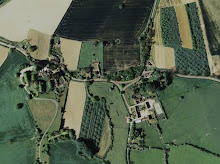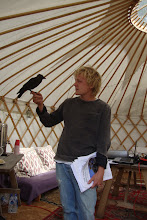.jpg)
Yesterday two friends helped me put a
barn owl box up in a tree next to the upper orchard at Charingworth. The rough grassland supports large rodent populations and owls have been observed in the area. I believe that a lack of appropriate nesting sites is limiting the local population from reaching its potential.
.jpg)
The assembly team (from left to right): Angus, myself and Freddie and a host of tools (and skills!).
.jpg)
Siting the box appropriately is very important, otherwise it is unlikely to be used by a barn owl . I used information on the
Barn Owl Trust website as a guide. The entrance hole needs to be high enough up, free from any overhanging vegetation and preferably facing away from the prevailing wind. Apparently barn owls are not the least interested in boxes, but are very interested in holes. I chose this ash tree as especially appropriate as the box can be positioned high up and facing along a green track bordered by the long rank grassland of the bottom end of the orchard.

1) Tie the ladder off to the tree at the top and drill a hole for the supporting screw (for this box design).
2) Screw in the screw, leaving neck exposed.
3) Slide box onto screw and tighten until secure.
4) Cut away any branches growing from below or hanging from above that may obstruct the flight path into the box.
.jpg)
Now we wait and see... Jackdaws are likely to be the most probable competitor and are problematic as they will build a huge nest to fill up the box. Since barn owls like to have an empty cavity other constructions should be sensitively removed (i.e. before any eggs are laid, and as long as they have not been built by an endangered species). Hopefully the entrance will be too exposed for other owl species and the box too large and deep for sparrowhawks, kestrels or pigeons. I have another box that I plan to site somewhere in the other orchard and hopefully soon the evening air will be hissing with ghostly beasts!

.JPG)
.JPG)
.JPG)

.jpg)
.jpg)
.jpg)

.jpg)













